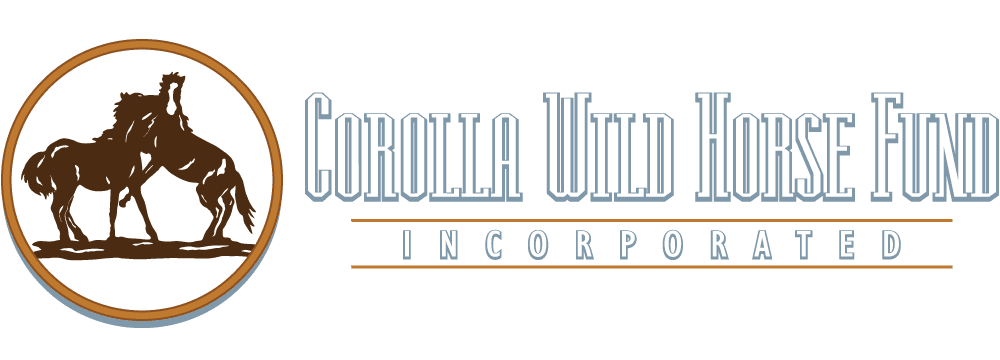Managing wild horses on 7,544 acres of diverse habitat including roughly 700 houses, thousands of people and vehicles presents many complex challenges. Responsible wild horse management requires 100% dedication. As the guardians of the wild herd, we respond 24 hours a day, 365 days a year.
Herd Management Includes breed conservation, contraceptive darting, soil and plant studies, DNA testing, emergency response, necropsy, fence and cattle guard maintenance, habitat preservation, and advocacy.
Each wild horse is documented and entered into a database. and much time is spent in the field monitoring the harems, documenting body condition, habitat usage, harem composition, determining breed conservation and reproduction control methods. Horses are not branded or micro chipped. They are identified by color, markings, and their home territories. As many as six aerial counts are conducted by helicopter and compared to field notes.
The Herd Manager also inspects and organizes the maintenance of the sanctuary fencing and cattle guards.
Minor injuries or sick horses are treated in the field if possible by the Herd Manager. More serious injuries or illnesses may require capture and removal, or humane euthanization. Veterinarians are always consulted for more serious medical issues. When a wild horse is removed from its habitat, it cannot be returned to the wild. Any horse that is removed either has a life-threatening injury or illness, or has become dangerously habituated to humans. When a wild horse is removed from its habitat, it cannot be returned to the wild because there is a risk that the wild horse could carry back a disease for which the herd has no immunity and/or the horse will certainly be habituated because of its time spent with humans. Any horse that is removed either has a life threatening injury or illness or has become dangerously habituated to humans.
The Corolla Wild Horse Fund employs a darted immunocontraception program using the FDA approved substance PZP (porcine zona pelucida). It is conducted under the auspices of the Humane Society of the United States and the Science and Conservation Center in Billings, Montana. Our staff undergoes extensive training at the Center to safely deliver PZP by Co2 pistol, CO2 rifle, or by blowgun. It is administered annually and is the least invasive method of delivery and the most humane method to control population.
The CWHF Herd Manager and CWHF staff all work cooperatively with other equine organizations both statewide and nationally to assure best practices in the management of the wild horses.



